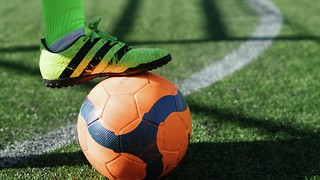Award winning photo for Cambridge scientists
Picture of ant carrying 100 times its own body weight astounds judges

A team of researchers from the Department of Zoology at the University of Cambridge has won first place in a science photo competition for snapping a picture of an Asian weaver ant carrying a weight 100 times its own body mass in its pincers, while hanging upside-down.
The remarkable image, which was taken as part of a project researching the “biomechanics” of ants and other insects – namely, their sticky feet – won first prize in the opening Biotechnology and Biological Sciences Research Council (BBSRC) Science Photo Competition.
Dr Thomas Endlein, who was responsible for the photo, won £700 worth of photographic equipment. However, according to the BBSRC, it is not just the scientists’ artistic ability that earned them the prize, but the science behind the image. In particular, it is hoped that the findings may help in the development of new types of glue.
According to one judge: “This ant makes a dramatic picture which is immediately understandable. The composition juxtaposes the ant’s delicate structure with the solidity of the weight, inviting questions about the research it illustrates.”
Dr Endlein was unavailable for fresh comment, having moved to the University of Glasgow, but has made enduring input to the project, which hopes to develop a new kind of insecticide based on the research into the mechanism by which insects attach themselves to surfaces.
Called “Insectislide,” it is a non-toxic, environmentally-friendly, and weatherproof coating technology that is simultaneously easy to clean off. This has probable ramifications for crop and household pest protection.
The means by which the weaver ant is able to perform extraordinary feats of acrobatics on both smooth and rough surfaces is via a soft cuticular sac called the arolium, located between the claws. The sticky contact area has a specialised texture common to many insects, supported by two hard structures - the ‘arc’ and the ‘handle’.
By the action of the claw’s ‘flexor’ tendon, the volume within the limb is compressed and liquid is forced into the arolium, causing it to inflate. In other words, the ant simply has to bend its legs in order to attach itself to a wide variety of surfaces. They can also adapt to different weight loads.
Dr Endelin said: “Ants can change the size and shape of the pads on their feet depending on the load they are carrying. If they have to carry heavy loads they increase the contact area, and when they need to run they decrease it.”
 News / Council rejects Wolfson’s planned expansion28 August 2025
News / Council rejects Wolfson’s planned expansion28 August 2025 News / Tompkins Table 2025: Trinity widens gap on Christ’s19 August 2025
News / Tompkins Table 2025: Trinity widens gap on Christ’s19 August 2025 Comment / My problem with the year abroad29 August 2025
Comment / My problem with the year abroad29 August 2025 News / ‘Out of the Ordinary’ festival takes over Cambridge 26 August 2025
News / ‘Out of the Ordinary’ festival takes over Cambridge 26 August 2025 Sport / Return to your childhood sport! 29 August 2025
Sport / Return to your childhood sport! 29 August 2025









